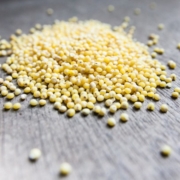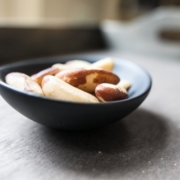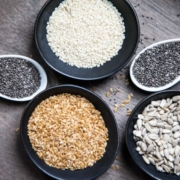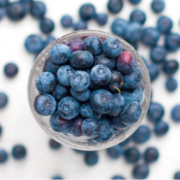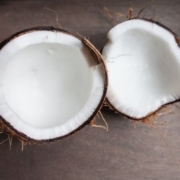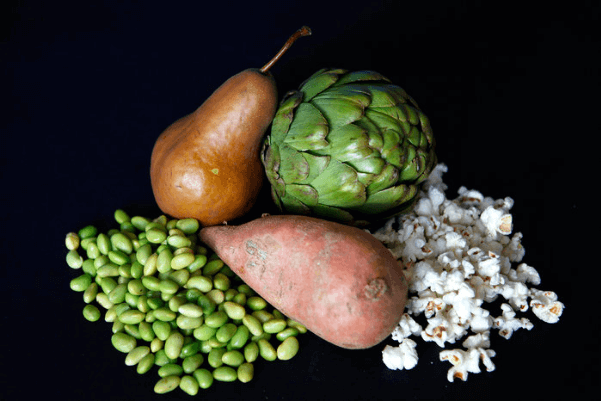
Carbohydrate density: what is it, and why is it so important for weight loss and
management?
The term “carbohydrate density” refers to the percentage of food mass made up of
carbohydrates – minus the fiber component. Most carbohydrate dense food will end
up as sugar in your body, which correlates with the blood sugar spike after you eat a
high carb food.
Ian Spreadbury, a well-known researcher focused on the cause of our nation’s
increase in obesity and diabetes, came up with the notion that ancestral foods
(foods that humans have eaten for thousands of years) are not dense in digestible
carbohydrates, unlike many processed modern foods. In fact, the food in nature will
not typically have carbohydrate density over 30%.
Packaged foods are usually stripped of their natural fiber content, and have higher
carb density than foods found in nature. Think about our ancestors and how they
ate: they ate food from the ground and meat that they killed.
Little fiber and consuming a high carb density diet can lead to inflammation, insulin
resistance, leptin resistance, and obesity. Modern food has become very
carbohydrate dense – and that’s why we see an increase in so many inflammatory
diseases.
Calculating the carbohydrate density of food is simple…
In chickpea based pasta, a 2-ounce serving has a total weight of 57 grams, with 32
grams of carbohydrates and 8 grams of fiber. To calculate the net carbs, you subtract
8 (grams of fiber) from 32 (carbs), giving you 24. The divide the net carbs (24) by
the total weight (57), giving you .42- or a carb density is 42%. That is very high, as
we want to aim for a carb density below 30%. This type of high carb food turns to
sugar in your body, and ultimately fat.
For Barilla pasta, a 2-ounce serving has a total weight of 56 grams, with 42 grams of
carbohydrates and 3 grams of fiber. Following the same process, we subtract the
fiber from the carbs for net carbs of 39, then divide by the total weight to get .69 –
which means that one serving of Barilla pasta has a 69% carbohydrate density.
In fact, the food in nature will not typically have carbohydrate density over 30%. Click To Tweet
So, what foods fall within our ideal range of carb density? Let’s look at a sampling of
foods with carbohydrate density ≤ 23% (from lowest to about 23% excluding fiber):
• Chicken, roasted thigh and skin = 0.0%
• Beef = 0.0%
• Lamb = 0.0%
• Pork = 0.0%
• Mackerel = 0.0%
• Eggs, whole poached = 0.7%
• Spinach, raw = 1.4%
• Cauliflower, boiled without salt = 1.8%
• Swiss chard, raw = 2.1%
• Cheese, gouda = 2.2%
• Turnips, raw = 4.6%
• Kale, raw = 5.2%
• Macadamia nuts = 5.2%
• Carrot, raw = 6.8%
• Beets, raw = 6.9%
• Onion, raw = 7.6%
• Honeydew melon, raw = 8.3%
• Orange, raw = 9.1%
• Apple, raw with skin = 11.4%
• Kiwi fruit, raw = 11.7%
• Lentils, boiled = 12.2%
• Leek, raw = 12.4%
• Parsnip, raw = 13.1%
• Black beans, boiled = 15.0%
• Ginger root, raw = 15.8%
• Pistachios, raw = 17.2%
• Buckwheat groats, roasted, cooked = 17.2%
• Sweet potato, baked in skin = 17.4%
• Quinoa, cooked = 18.5%
• White potato, baked in skin = 19.0%
• Brown rice, medium grain cooked = 19.5%
• Wild rice, cooked = 19.5%
• Banana, raw = 20.2%
(Adapted from Dr. Danenberg)
Packaged foods are usually stripped of their natural fiber content, and have higher carb density than foods found in nature. Click To Tweet
There are plenty of options for fiber-rich foods that won’t give you that carb dense
sugar blast. Know what you’re consuming, and even if it seems healthy (like the
chickpea pasta mentioned above), it’s still worth doing the math to really know
what you’re putting into your body.
Making consistent, healthy choices is how you build lasting health – and you can
make better choices when you’re empowered with information! Pay attention to
carbohydrate density in the foods you eat, and you’ll be that much better about
avoiding unnecessary sugars!
Sending love and light,

![]()

